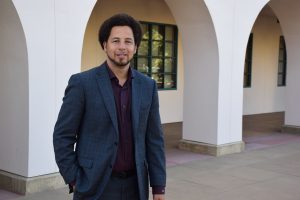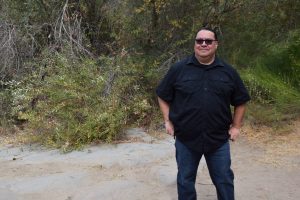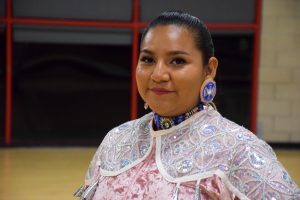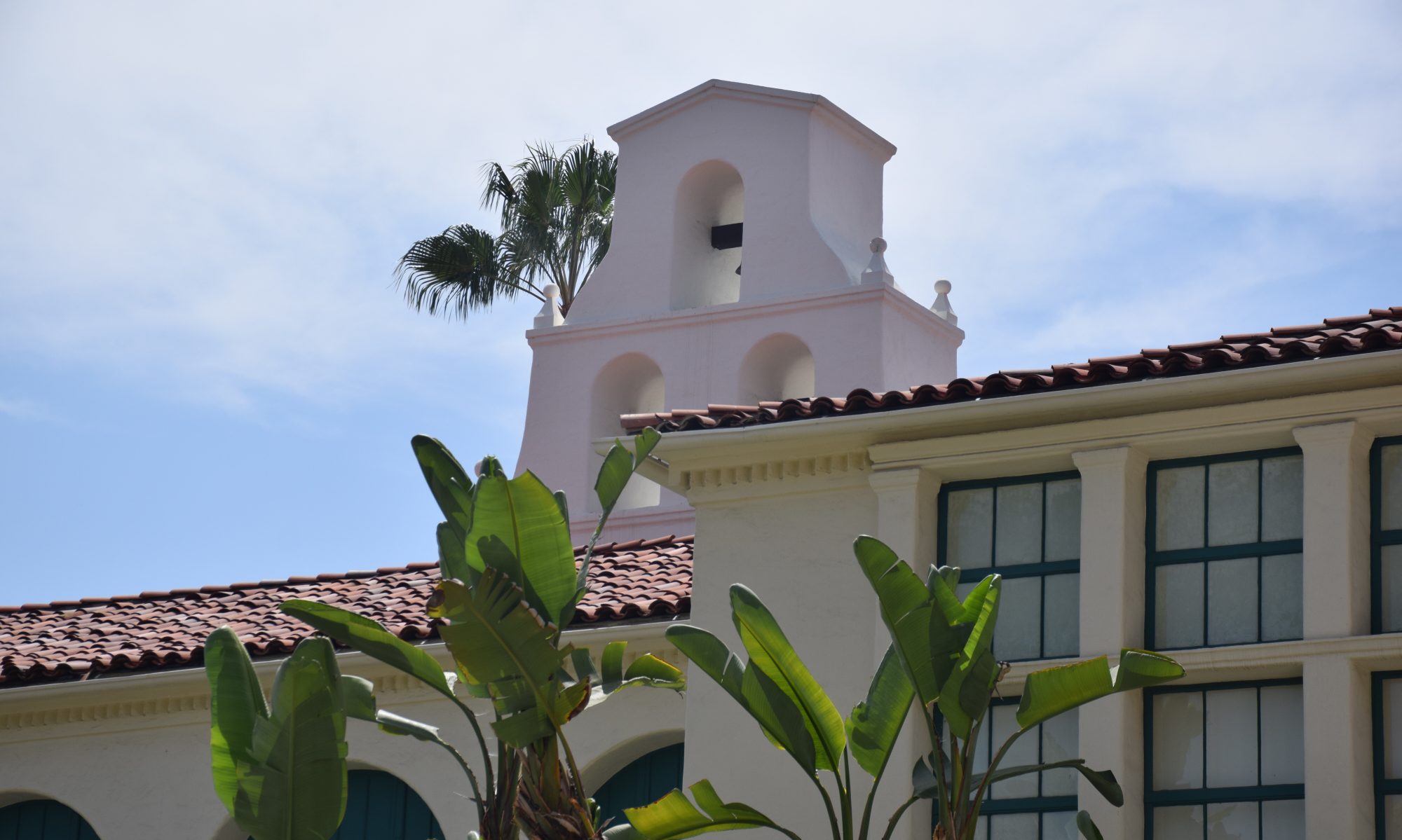San Diego State University working toward a more diverse, inclusive campus community
Dec. 16, 2018
by Lauren J. Mapp
Story Highlights
- Since its founding in 1897, San Diego State University has been educating students in Southern California and currently has 34,828 enrolled undergraduate and graduate students.
- Critics say that SDSU can still make inclusive improvements to ethnic demographics and treatment of students. Student Shane James said “I feel like it can improve by diving into more conversations around the nuances about culture and diversity, tokenization.”
- The campus community is brainstorming solutions for improvements in inclusion, diversity and equity on campus under the leadership of a new university president, Adela de la Torre.
SAN DIEGO — San Diego State University, a public college in Southern California, has made gradual strides over the past decade to increase ethnic diversity and the graduation success rates for its minority populations.
The total student body at SDSU in fall 2017 was 33.9 percent white and 30 percent Mexican American and/or Latino. The rest of the population is comprised of 7.9 percent “non-resident alien,” 7.1 percent Asian, 5.6 percent Filipino, 3.8 percent African American, .4 percent Native American, .2 percent Pacific Islander, students.
Students identifying as “two or more races” represent 6.4 percent of the body, and the “unknown” race category makes up 4.7 percent of the total, according to CSU data.

Photo by Lauren J. Mapp
Luke Wood has worked with staff, faculty and student representatives as SDSU’s chief diversity officer since September 2018. Along with the new college’s new president, Adela de la Torre, he said he is working toward diversifying the campus community and making it a more equitable institution.
“What we’re really interested in doing is helping to create an environment of inclusion, where individuals from diverse communities feel welcome, they feel affirmed, they feel like this is a place that they want to be,” Wood said. “And we want to that to be the same case for all of our students, for our faculty, for our staff.”
Ethnic demographics at SDSU compared to other educational systems in California
As one of the 23 colleges in the California State University system, SDSU helps to serve a portion of the 484,297 CSU students, according to CSU statistics for the fall 2017 semester. With 34,828 students enrolled in fall 2017, SDSU is the fourth largest campus in the CSU system.
Throughout the CSU system, the population of enrolled students is 40.1 percent Mexican American and Latino, 23.5 percent white, 11.6 percent Asian, 4.2 percent Filipino, 4.1 percent African American, .3 percent Pacific Islander and .2 percent Native American.
Students identifying as two or more races represent 4.7 percent of the CSU, and 4.7 percent of students have an unknown race.
Compared to some other colleges, Wood said SDSU has made good progress toward diversification of the student population.
“In terms of some of the areas where we rate well in, we’ve done a pretty good job with recruitment of students from diverse communities,” Wood said. “Of course, there’s always more work that needs to be done there, but we’ve done a really good job there.”
The population of Mexican American students enrolled at SDSU has increased from 17.8 percent in 2008 to 24.9 percent in 2017. African American student enrollment, however, has made a slight increase over time, from 3.81 percent in 2008 to 3.83 percent in 2017.
Other minority demographics have seen gradual decreases over the same timeframe.
Native American students enrolled at SDSU decreased from .62 percent in 2008 to .36 percent in 2017. Students identifying as Pacific Islander at SDSU have decreased from .87 percent to .21 percent during the same period.
Based on this reporter’s analysis of the enrollment data, if only 100 students attended San Diego State University, then the total student population would be comprised of four African American, seven Asian, six Filipino, 25 Mexican American, five Latinx and 34 white students. Students identifying as two or more races would translate to six students and “non-resident alien” students account for eight students per 100. American Indian and Pacific Islander students make up less than .5 percent of the total student population.
Measuring diversity effort success
One of the ways that university administrators judge the success of efforts to increase diversity and inclusion on campus is through graduation rates.
“We’ve done a good job when it comes to graduation and success rates,” Wood said. “We have a very high success rate here at the institution. Even when you break that down by different groups, there still tends to be very high levels of success.”
In recent years, SDSU has steadily increased the percent of first-time freshmen who identify as minorities who successfully complete degrees at the college.
In 2014, the graduation rates for first-time freshman students identifying as Native American was 45 percent, African American first-time freshman graduation rate was 42.7 percent and for Latinos it was 41.1 percent, up from the 2010 rates of 28.6, 24 and 24.3 percent, respectively.
One-year continuation rates have also shown increases for some minority populations on campus. African American students were 89.9 percent likely to continue in 2017, up from 84 percent in 2013. Pacific Islander students had a continuation rate of 91.7 percent in 2017, up from 81 percent in 2013.
Challenges related to diversity

Photo by Lauren J. Mapp
Ozzie Monge, former SDSU American Indian studies professor and alumnus, said that in his opinion, the university has not had the best track record for supporting diversity efforts.
A major obstacle to diversity, equity and inclusion on campus is reaching out to diverse communities to apply for open faculty positions, Wood said.
“We have a faculty that is not often reflective of the diverse students that we serve… I think one of the biggest challenges is who’s in the pool,” Wood said. “If there’s a new job that’s coming out, I’m reaching out to my colleagues, I’m reaching out to my friends, I’m encouraging them to apply. We want faculty to do that, but our networks so often are reflective of what we look like.”
Community members offer solutions for improvements to diversity
For the university to continue to grow as a diverse community and better serve the student population, Wood said that one option is to educate the faculty to help them become better connected to people of various backgrounds.
“For our faculty who are here, how do we better empower them to be able to engage people who look different than them and come from different communities and different cultures?,” Wood said.
Monge said that despite the issues he has observed over the years in regards to diversity on campus, he is now seeing positive changes happening within the California State University system.
“Some of the things that need to be done are happening, in small and in small ways,” Monge said.
Referring to SDSU as a “life-sized, fourth grade mission project,” Monge said that positive changes to diversity demographics at the collegiate level can grow from elementary education improvements.
The mission project has been used as an educational tool to teach fourth grade students about the history of California and the Spanish missions, according to the California Department of Education’s instructional handbook. Through this project, students build small replicas of mission structures.
“There’s a lot of romanticizing about California history, about the mission system and about Father Serra, and that found its way into the education system through the fourth-grade mission project,” Monge said. “People have begun to educate about the realities of the mission system, so that the fourth-grade mission project is no longer required to be taught.”
By encouraging students to learn about other cultures and narratives, Monge said he believes that colleges can in turn become more equitable institutions.
“Slowly but surely equitable education, one that doesn’t necessarily tell a narrative that is one-sided, is finding its way into the curriculum,” Monge said. “In the university system, this is one of the few places where students coming into the university hear other narratives when they come to other departments, like American Indian Studies.”
Interdisciplinary studies student Shane James said that while they perceive the college as working to become a more diverse institution, they think there are ways the college can make continue to progress.
“I feel that (SDSU) is working to be a diverse university, but I feel like there is always room for improvement,” James said. “I feel like it can improve by diving into more conversations around the nuances about culture and diversity, tokenization (and) all kinds of stuff.”

Photo by Lauren J. Mapp
Student Raelynn Bichitty, English education major, represents the university’s indigenous population as a member of the Native American Student Alliance.
“Since coming here in my freshman year, I’ve seen (diversity) grow a long way,” Bichitty said. “I feel like there’s been a lot more initiatives pushed from both the students and the administration and I’m glad to see there’s a lot of progress with the initiatives for diversity.”

